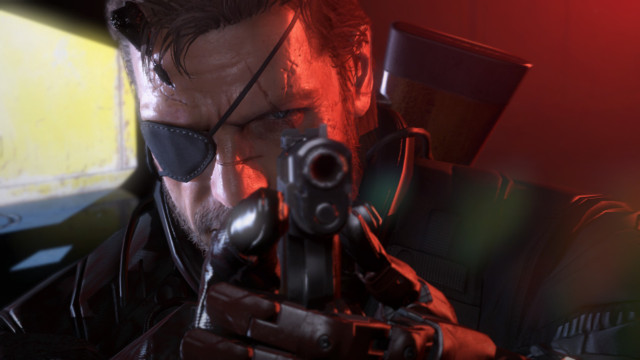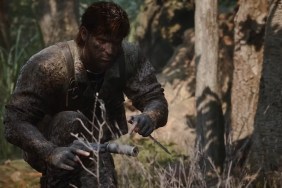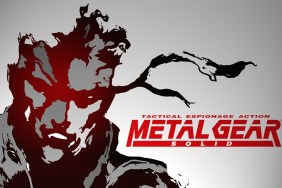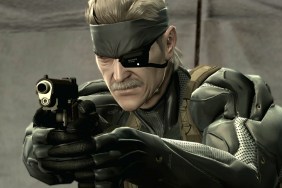Spoiler Alert: Concepts will be discussed below that don’t directly reference story pieces in the game, but do talk about game structure and design.
It was unfathomable when Hideo Kojima had a dramatic break-up with Konami. Working together for 28 years didn’t seem to matter as both the legendary Metal Gear creator and Japanese publisher split paths in a way that left gamers in shock.
No official reason has been given for the break up, but the recent release of Metal Gear Solid V: The Phantom Pain offers a clue as to what happened.
The initial wave of acclaim following MGSV: The Phantom Pain‘s release has been largely replaced with discussion about how its story didn’t live up to expectations—as a Metal Gear fan I certainly agree. Although its superb presentation and gameplay challenge any notion that it isn’t a great game, fans expecting a mind-blowing conclusion to the Metal Gear saga anywhere near as interesting as the pre-release hype (i.e. Moby Dick Studios) have been left scratching their heads.
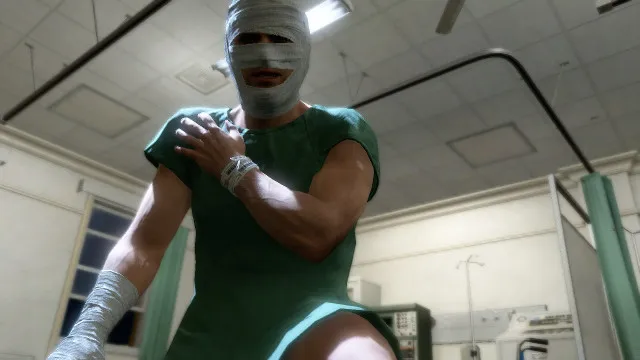
Many players who have experienced Chapter 2 in MGSV: The Phantom Pain have noticed the incomplete nature of the game structure. While the first 31 Missions (Chapter 1) each have their own—mostly—well thought out objectives, structure, and storytelling, the 20 that follow in the second chapter feel rushed. In Chapter 2 Big Boss is tasked with revisiting many Chapter 1 missions with higher difficulty, full motion cutscenes are far less common than in the first half of the game, and by the end of it all it feels like something is missing.
Last week it was uncovered that an important Mission 51 was cut from the game entirely. Some of its assets were found encrypted in the files of the game, and only then did it become clear that there was originally supposed to be more to the MGSV: The Phantom Pain package.
Fans have also noticed that important events marked in the timeline, and even shown in pre-release media haven’t made it into the game. For example, there is no return to Camp Omega, and a section featured in the Nuclear trailer is nowhere to be found in the game. As a result, major plot points in the franchise are left unaddressed.
There are also the half-realized features. The Mother Base locale, for as highly detailed and important as it is to the story experience, serves no real purpose from a gameplay perspective. The world of MGSV: The Phantom Pain also lacks a lot of the details and unpredictability that you’d find in similar AAA open-world games, such as the presence of civilians and randomized events.
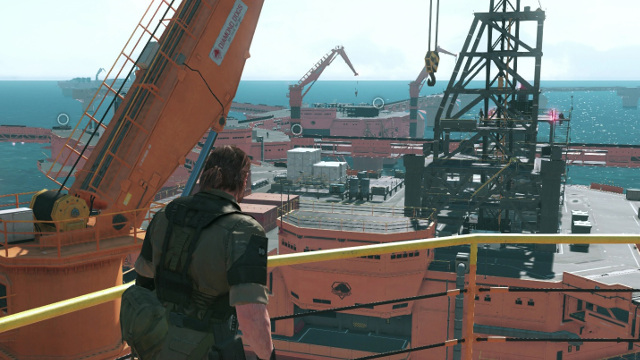
MGSV: The Phantom Pain is in such an unfinished state that fans have begun creating wild conspiracy theories, such as Kojima making it this way intentionally, with a post-launch package arriving today (9/11) to bring everything full circle—he was always a troll, but never to that degree. Others firmly believe that anything unaccounted for will be delivered as part of future DLC. And a select few remind us why Metal Gear fans are the craziest in the world. Just take a look at this:
Looking at all the evidence, it appears that Kojima’s vision for MGSV: The Phantom Pain was something much larger than it turned out to be. Previous Metal Gear releases had many more chapters (MGS: Peace Walker and MGS4: Guns of the Patriots had 5 Acts and a Prologue) than MGSV: The Phantom Pain, and it’s likely that wasn’t always going to be the case. There’s a good chance that Kojima wanted Chapter 2 to be full of unique missions, and perhaps even introduce a third region. There could have possibly even been more Chapters.

Konami invested more than any game in its history with MGSV: The Phantom Pain. An entirely new engine (FOX Engine) was developed along the way, A-list actors (i.e. Kiefer Sutherland) were brought in for voice and motion capture, and as the first open-world Metal Gear game it presented a tremendous amount of challenge. To help recoup costs a heavy dose of microtransactions were introduced. In addition, Konami would push Kojima Productions to sell the prologue for MGSV, MGSV: Ground Zeroes, as a standalone product for $39.99. These two moves would help buy some extra time for Kojima Productions as its development cycle pushed past the five year mark.
But it appears that extra time wasn’t enough.
Although clearly incomplete, MGSV: The Phantom Pain manages to be a lengthy experience that offers more than 50 hours of content. For the most part, that content is enjoyable thanks to what many are calling the best gameplay in any stealth action game in history (the real reason for its high Metacritic score). Along with tons of Side Ops to engage in, many of those unfamiliar with the Metal Gear saga have walked away satisfied.
MGSV: The Phantom Pain isn’t just an ordinary game, though. It is in-fact Kojima’s final Metal Gear game after 28 years of storytelling. It was supposed to fill in a void in the timeline that has long been unexplored, and bring closure to many unknowns commonly discussed by fans. Unfortunately, it doesn’t answer many of these questions, and raises some new ones along the way. You could even argue that despite its significance, from a story perspective it’s the single least eventful game in the Metal Gear Solid series of titles.
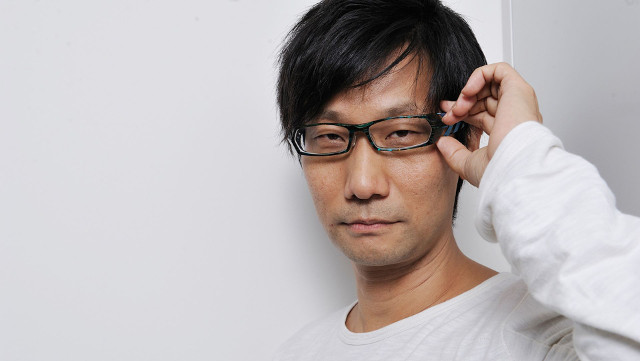
The greatest explanation for Kojima’s falling out with Konami is his drive for perfection. He wanted MGSV: The Phantom Pain to be something that was comprehensive and incredibly large. This was supposed to be the greatest Metal Gear game in history, with every last ounce of passion Kojima had for the franchise put into it.
Kojima wanted something way beyond Konami’s budget. Konami was willing to support him… up to a point. After more than 80 million dollars spent on its development, enough was enough. A deadline was set, and the development team had to rush to get everything in a state where it’s as cohesive as possible. Filler missions—which there are a ton of in Chapter 2—were tossed in, some content was cut, and a lot of the big picture dreamed of by Kojima had to be shelved.
With that, MGSV: The Phantom Pain will leave behind an interesting tale of how fun Metal Gear can be with perfect gameplay, and unanswered questions that continue the wild fan discussion that the series is known for.
Metal Gear Solid’s Weirdest Story Elements
Top 10 Wierd and Outrageous Story Elements in the Metal Gear Solid Series
-
Mr. Hot Coldman\'s Peace Walker Kills Itself
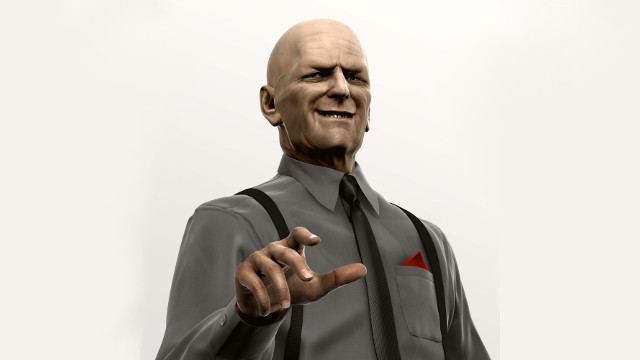
During Metal Gear Solid: Peace Walker Big Boss learns that CIA Station Chief Hot Coldman—yes, that's his name—worked together with Dr. Strangelove to make a nuclear metal gear equipped with The Boss' A.I. Called Peace Walker, it was a remarkably dangerous creation that was made specifically to return nuclear fire in the event of an offensive attack.
rn
rnSoon after its deployment, Peace Walker is mistakenly given order to return nuclear fire. A moment before the A.I. fires its ICBM, potentially summoning nuclear war, The Boss' A.I. comes alive and forces the Peace Walker to drown itself in Lake Nicaragua. The event is shown as a reawakening of the legendary The Boss and her anti-war philosophy. -
Johnny Sasaki the Diarrhea Expert
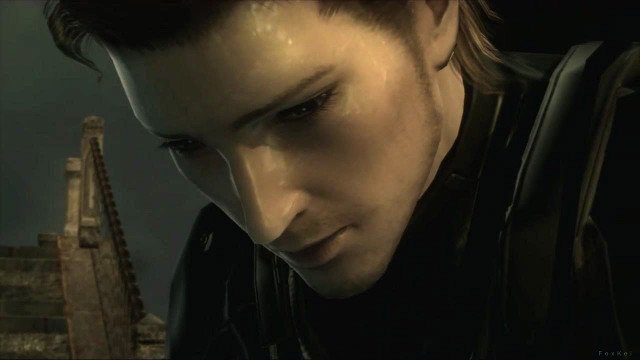
Since the original Metal Gear Solid there's been a recurring appearance of a character who battles with bowel issues. Known as Johnny Sasaki, his first appearance was in Metal Gear Solid where he guarded the cell of Solid Snake. He would leave his post after experiencing a rush of diarrhea, opening up an opportunity for Snake to hide himself and escape. His name was only encountered later in the credits upon finishing the game.
rn
rnIn Metal Gear Solid 2 Johnny wasn't physically encountered, and instead made a cameo when the player was provided a directional microphone to detect Richard Ames' pacemaker. Johnny's bowel movements could be heard through the wall during this sequence.
rn
rnMetal Gear Solid: Snake Eater continued the ridiculousness as Johnny's Russian grandfather was met by Big Boss following his capture. To no surprise, he similarly battled diarrhea while guarding a cell block.
rn
rnIn Metal Gear Solid 4 Johnny Sasaki was not only made into a major character, but his face was seen for the first time ever. Solid Snake encounters Johnny while he's having a bowel movement under the disguise of a barrel. Interestingly enough, Johnny would fight alongside Solid Snake during the game, and eventually marry Meryl Silverburgh leaving the audience in pure disbelief. -
Illuminati Censorship
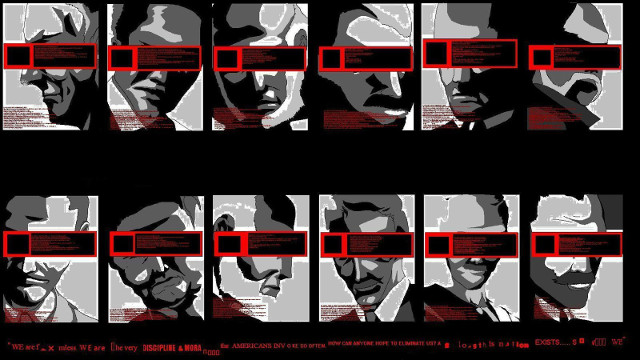
Throughout the Metal Gear Solid series a powerful organization comprised of wealthy individuals is mentioned. This world-controlling organization is made mysterious, bearing striking resemblance to what people in our real-world refer to as The Illuminati. It isn't until Metal Gear Solid 4 that the organization is featured front and center stage. rn rnDuring the course of Metal Gear Solid 4, the player regularly hears mention of a group with an obscure name. It turns out that when this name is heard, the person speaking is actually saying "The Patriots", the official name of the organization. However, thanks to nanomachine censorship, this is translated to "La-li-lu-le-lo" during communication. rn rnThe Patriots would later be revealed to be the support group of Metal Gear Solid: Snake Eater including Sigint, Para-Medic, and Major Zero, once again reinforcing that Hideo Kojima likes to correlate everything in the franchise no matter how insane it is. -
MGS2 Simulation Reveal
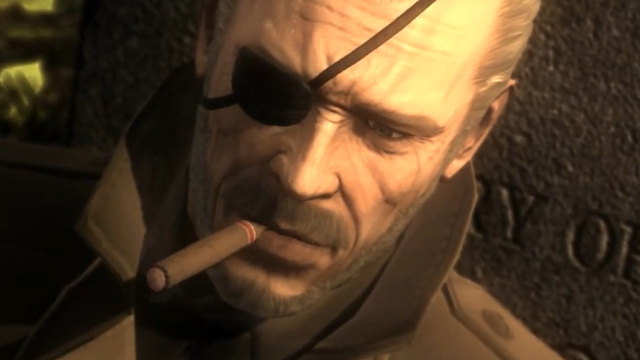
Big Boss' appearance at the end of Metal Gear Solid 4 was arguably unnecessary. What isn't arguable is how ridiculous the things he had to say were.
rn
rnDuring his 10+ minute speech to Solid Snake in a graveyard, Big Boss would state that many of the events of Metal Gear Solid 2 were just a simulation and never actually took place. He would go on to explain that an A.I. created by Major Zero would try to assume control of the world, crafting alternate universes in the process. For those who didn't like Metal Gear Solid 2, it was a redeeming revelation. For everyone else, it was silly beyond belief. -
Nanomachines Explain Everything
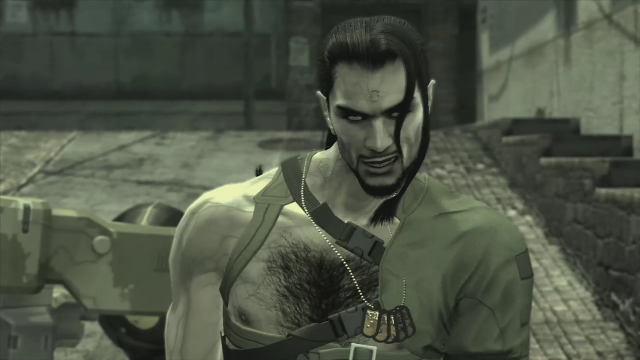
Metal Gear Solid has employed various supernatural elements over the years. Given the series' commitment to a realistic world, these elements always stood out as something bizarre but explainable through natural means.
rn
rnFor example, in Metal Gear Solid 4 Solid Snake would encounter an antagonist named Vamp, an ex-member of Dead Cell capable of running on walls at blazing speed, and even standing on water. He would even recover from significant wounds out of nowhere, making him seemingly invincible.
rn
rnVamp, along with a large library of other supernatural elements in the series, would later be explained as the product of nanomachines, microscopic machines that would dwell in the bloodstream of individuals. It was such a ridiculous turn of events that it has remained common joke among gamers when discussing game elements that have no logical explanation. -
Quadruple Agents
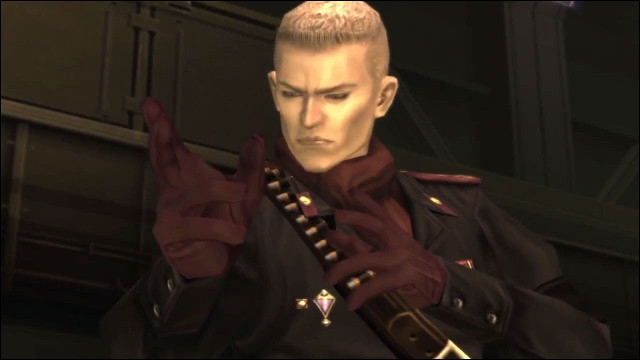
Undercover operations were an extremely important part of Metal Gear Solid: Snake Eater's storytelling. For one, The Boss' undercover defection from the U.S. to the Soviet Union was a major plot element, but it went much further from that.
rn
rnIt's revealed later into the story that Revolver Ocelot is a U.S. Agent who is, similar to The Boss, now working with the Soviet Union. However, he shows moments of being a double agent as he works in the Soviet Union's favor. Shortly after, he becomes a triple agent, and then eventually a quadruple agent. It's all a mess of complexity that ultimately does the iconic character a disservice.
rn
rnTo make matters worse, another character named Eva was similarly an undercover agent. Her motives are explained much more directly, but it's hard to dismiss the fact that Metal Gear Solid: Snake Eater is overflowing with undercover agents. -
The Arm
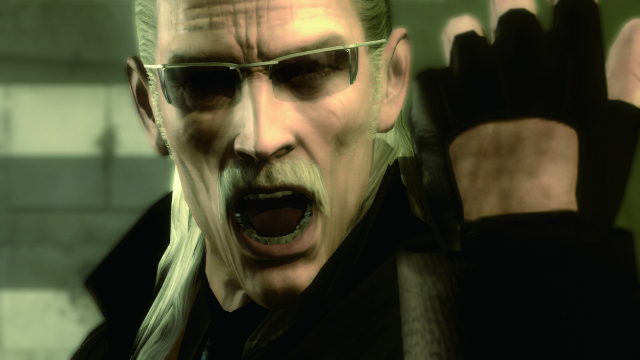
There is, simply put, nothing as controversial as Liquid Snake's arm. Chopped off during battle, the arm was soon transplanted onto the one and only Revolver Ocelot. Throughout Metal Gear Solid 4 Revolver Ocelot is shown behaving remarkably similar to Liquid Snake, explained as nanomachines in the arm taking over Ocelot's body. It's a far-fetched explanation that confused many players. rn rnHowever, the story makes a quick left turn out of nowhere and reveals that Ocelot was never controlled by the arm, but rather Ocelot hypnotized himself to behave and sound like Liquid Snake. Supposedly, he did this in order to fool The Patriots into thinking he was actually controlled by Liquid Snake. If you can't make sense of it, then you aren't alone. This single piece of the story is considered by many Metal Gear fans to be the worst plot element in the series' over 28 years of history. -
Paz\'s Nether Parts Bomb
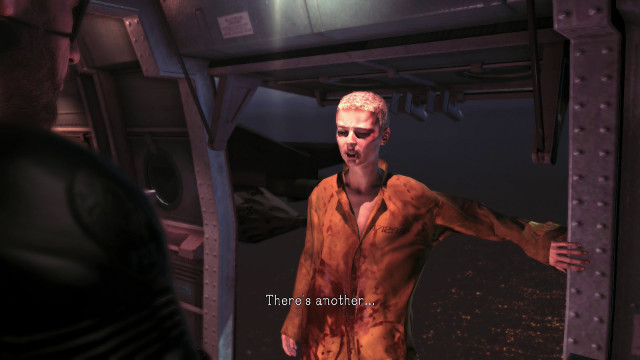
The story behind what Paz endured at the hands of Skullface prior to the events of Metal Gear Solid V: Ground Zeroes was already way over the top. To give you an idea, she was apparently gangraped and beaten, among other things that could be regarded as worse.
rn
rnAt the end of Metal Gear Solid V: Ground Zeroes she is rescued by Big Boss in a dangerous mission. Members on-board the escape helicopter quickly learn that she has a bomb in her abdomen. It is surgically removed before detonation, saving the crew. However, she soon reveals that there is another bomb, inferring that it's inside her private parts. She jumps out of the helicopter just in-time for the nether parts bomb not to cause instant-death to Big Boss and his team. However, the helicopter crashes due to structural damage, trigger the beginning of Big Boss' multi-year coma. -
MGS3\'s Supernatural Bosses
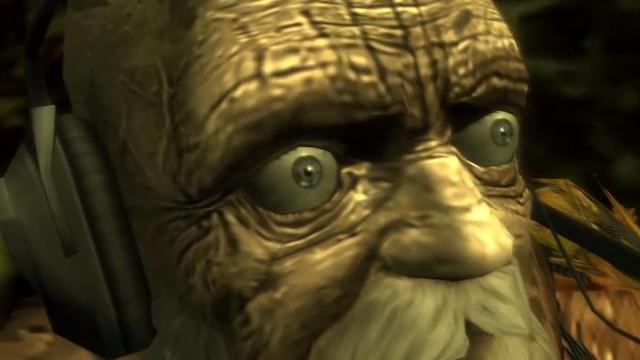
Metal Gear Solid: Snake Eater's boss cast is regarded as one of the most consistently interesting in gaming history. However, that doesn't mean that their design is founded in reality. rn rnAmong the group of antagonists you have a guy who can control bees, another who produces electricity at will, a ghost, and an over 100 year old man who is better with a sniper rifle than anyone else in the world. It's got to be those nanomachines. -
Visible Codec Conversations

Codec conversations have been an important element of Metal Gear since its inception. In Metal Gear Solid 4 Liquid Snake demonstrates that people can see each other through the system when he changes costume to fool Solid Snake. Given that codec is supposed to be radio communication through an ear piece, it makes absolutely no sense.
